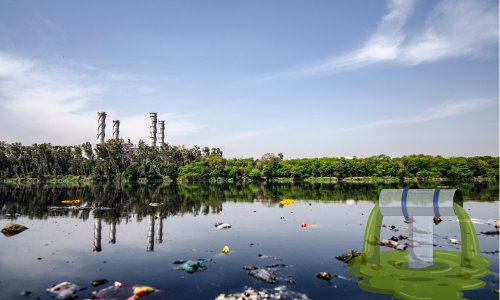Pharmaceutical Waste Management: Risks and Solutions for the Environment
Explore the environmental risks of improper pharmaceutical waste disposal and discover effective, sustainable waste management solutions shaping the chemical and pharma industries in 2025.
Pharmaceuticals are essential to modern healthcare, improving and saving lives across the globe. However, their production, use, and disposal also pose a growing environmental challenge. Improper pharmaceutical waste management has led to the contamination of water bodies, soil, and ecosystems—raising serious concerns about both environmental health and human safety. Addressing these risks requires a shift toward more sustainable practices, stricter regulations, and increased public awareness.
Pharmaceutical waste includes expired medications, unused prescriptions, manufacturing byproducts, and contaminated materials from healthcare facilities. When these substances are discarded without proper treatment—flushed down toilets, poured into drains, or dumped in landfills—they often find their way into water systems. Even at low concentrations, active pharmaceutical ingredients (APIs) can disrupt aquatic life, affect microbial balance, and contribute to the emergence of drug-resistant bacteria.
Antibiotics, hormones, painkillers, and psychiatric medications are among the most commonly detected residues in rivers and lakes near urban centers and manufacturing zones. Fish and other aquatic organisms exposed to these substances have shown signs of reproductive issues, behavioral changes, and developmental defects. Over time, this contamination not only threatens biodiversity but also potentially enters the human food chain.
One of the major risks associated with poor pharmaceutical waste management is the accumulation of antimicrobial resistance (AMR). When antibiotics are released into the environment, they promote the evolution of resistant bacteria—making infections harder to treat and increasing the global burden of disease. AMR is now considered one of the most serious public health threats, and environmental exposure to pharmaceutical waste plays a significant role in its spread.
To combat these challenges, sustainable solutions must be implemented across the pharmaceutical lifecycle—from manufacturing to disposal.
At the production level, pharmaceutical companies can adopt green chemistry principles to minimize the use of hazardous substances, reduce waste generation, and treat effluents before discharge. Technologies such as closed-loop water systems, solvent recovery units, and advanced oxidation processes can significantly reduce environmental pollution.
Healthcare facilities, pharmacies, and households also play a critical role. Implementing safe disposal programs, such as take-back schemes and drop-off points, can prevent unused or expired medications from entering the environment. These programs encourage responsible behavior among consumers and ensure that pharmaceutical waste is handled through approved channels, such as high-temperature incineration or chemical neutralization.
Public education and awareness are equally important. Many individuals are unaware of the impact of flushing medications or throwing them in the trash. Simple campaigns explaining the risks and providing clear instructions for disposal can lead to substantial improvements in community-level waste management.
Governments and regulatory bodies are beginning to respond with stronger policies. Some regions have introduced extended producer responsibility (EPR) rules, requiring pharmaceutical manufacturers to finance and manage the collection and disposal of their products. Others are enhancing wastewater treatment standards and monitoring pharmaceutical residues in the environment more rigorously.
Digital tools and data analytics are also emerging as valuable allies in tracking pharmaceutical waste flows, identifying high-risk zones, and designing targeted interventions.
Effective pharmaceutical waste management is not just an environmental issue—it’s a public health priority. With growing global attention on sustainability and health system resilience, now is the time for coordinated action. By combining innovation, regulation, and community engagement, the pharmaceutical industry and society at large can reduce the environmental impact of medicine and safeguard both ecosystems and future generations.
Meta Keywords:
pharmaceutical waste management, environmental risks pharma, chemical waste solutions, pharma sustainability, eco-friendly pharma practices, waste disposal in pharma, hazardous pharmaceutical wastePharmaceutical Waste
What's Your Reaction?




















